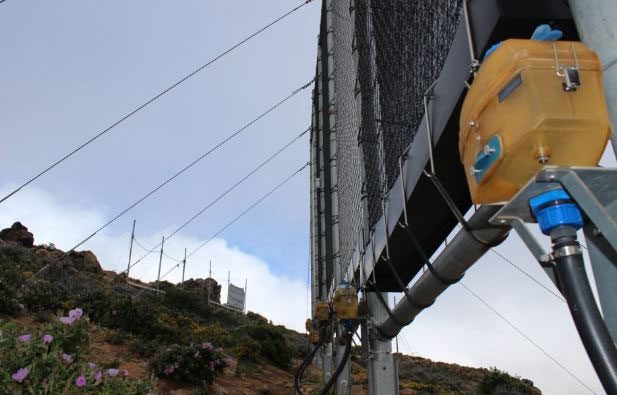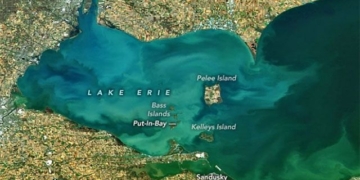According to a reporter in Paris, in the context of increasingly severe drought, France is encouraging the use of fog harvesting technology, which is currently being applied in many countries for agricultural irrigation or to meet community water needs.
Although still relatively unknown in France, this ancient method has been revived and applied in many arid regions, especially in Latin America.

The benefit of this method is its simplicity, utilizing only basic fog harvesting structures. (Source: CNN)
In the 1960s, Chile pioneered this technique by installing fog nets in the Atacama Desert.
In Morocco, women from the non-governmental organization Dar Si Hmad have designed and installed the world’s largest fog water collection system since 2015 in the Sidi Ifni mountains, providing water for hundreds of households.
In recent years, Europe has also seen similar initiatives flourish in Portugal and Spain. The European Commission (EC) has even dedicated a program to this technique since 2020.
The basic tool used for collecting fog is quite simple. It consists of movable nets made from plastic (polypropylene) or steel, mounted on stainless steel poles ranging in height from 2 to 4 meters.
Positioned facing the wind that carries clouds and fog, these nets capture water droplets suspended in the air—the main component of fog. Over time, these droplets accumulate in the nets and eventually form a stream of water that can be collected or stored.
Working at the Institute for Development Research, hydrology expert Alain Gioda has participated in fog collection projects in Latin America since the early 1990s.
This expert explains: “The advantage of this method is that it doesn’t require machinery; it only uses simple fog harvesting structures. It’s a low-cost technique that consumes no energy and poses no risk of mechanical failure.”
Researcher Franck Galland from the French Strategic Research Foundation mentions: “The polypropylene mesh of these nets retains an average of 30% of the moisture from the fog. The water collected from the fog can then be used for irrigating nurseries, agricultural land, or providing drinking water to remote villages.”
Fog nets can generate significant amounts of water—about 20 to 40 liters per square meter of net per day—and at a low cost (ranging from 70 to 180 euros for a small collection unit designed for a lifespan of 10 years). However, the challenge lies in scaling this model to a larger scale.


















































